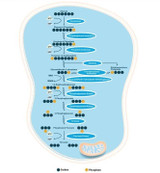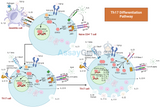3 Reasons to Publish in Open Access Journals
Over the past few years momentum has gained in the scientific publishing community for researchers to publish their data in open access scientific journals. Open access to published research offers a significant social and economic benefit and ensures scientists and the general public are up to date with the latest scientific discoveries.
Currently the Wellcome Trust , Research Councils UK and NIH expect authors to maximise their opportunities to publish in open access formats, and require authors to have their work freely available up to 6 months to a year after publication depending on funding agency.
However, although many authors would prefer that their work is freely available to the public, many are conflicted with publishing in open access journals due to lower impact factors, recognition, and nostalgia that comes with publishing in top journals. As we all know publishing in high impact journals such as Nature, Science, Cell or PNAS during your PhD or Post-Doc will more than likely establish your career as a researcher and open many doors outside of academia. Furthermore many institutions now review tenure based on publication impact.
Why publish your work in an open access journal and face the risks of reduced grants and career opportunities?
Interestingly FigShare seemed to have solved at least one part of the open access publishing problem by allowing researchers to upload there data, whether positive or negative. Uploaded data is provided a D.O.I, thus allowing other researchers to cite data published. Allowing researchers to upload negative data provides the research community with invaluable information that would not be deemed suitable for publication, however, is highly critical to our progression of scientific interrogation.
Furthermore, publication of negative data will allow researchers to make observations on data that was not previously available, and thus spurn even more research or cut losses in projects that are currently trying to solve the same problem. In addition, publishing negative data as well as positive data will also enable researchers to further substantiate their grant money to funding agencies, allow the funding bodies to provide constructive feedback on work, an option not previously available.
3 reasons for publishing in open access journals:
- Great scientific discoveries stand alone and do not require the brand of a high impact journal to make it a great seminal publication that influences the field. If you work is good enough, your peers will recognize this and the same opportunities will open for you as would have opened if you published it elsewhere.
- All data is good data: For many reasons projects just don’t work, whether it’s a technical reason, the tools researchers are using or previously published observations have been incorrect or partially correct. Publishing data in open access journals/platforms allows researchers to take a complete view of the field and not just a partial view due to restriction of data.
- Impact factors are growing: In 2010 Nature Publishing group launched their own version of an open access journal called Nature Communications. Since it was launched Nature Communications has impressively acquired impact factor of 10.015, furthermore within the last year Cell Press has launched their own open access journal called Cell Reports and has attracted publications from some of the leading laboratories in world such as Doug Green and Alex Behrens and will surely publish a respectable impact factor within the coming months.Overall publishing in open access journals is critical for the future of science and will be the driving force behind the greatest human discovery.
Recent Posts
-
Biological Role of GLP-1
Glucagon-like peptide-1 (GLP-1) is a critical hormone in the regulation of glucose met …20th Jun 2024 -
Th17 Cell Differentiation: Insights into Immunological Dynamics
Th17 cells, a subset of T helper cells characterized by their production of interleukin-17 (IL- …25th May 2024 -
Assay Genie New Asian Distributor May 2024
Dublin, Ireland — May 20th 2024 — Assay Genie, a leading supplier of ELISA Kits, Ant …19th May 2024




